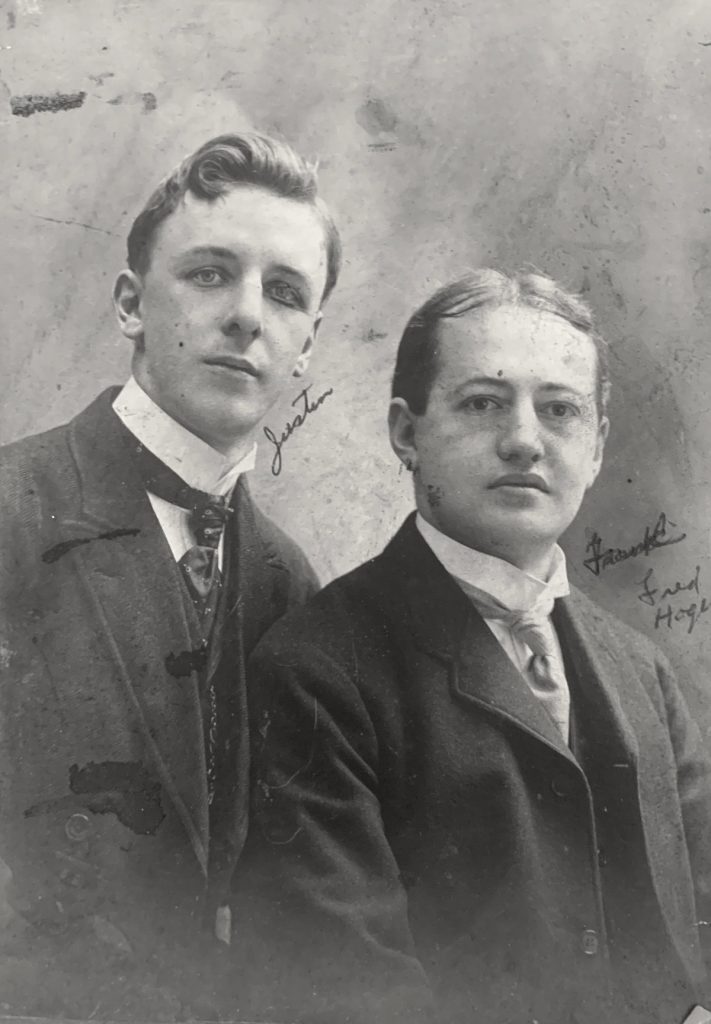Since I moved to the Bronx back in September, I have been more inspired than ever to write and to draw. Living in the very place where much of the essential history in ragtime and recording happened is truly a privilege, and it is exceptionally motivating. There is nothing quite as nice as being able to spend time walking on ground where such incredible history happened.
So with that, it is finally time to reveal that, as some readers of this column might have been wondering about it, I am writing a book. After over a decade of research, it is time to write a book on Justin Ring. It seems now that there is just enough information about him and those around him to manifest a decently sized book. There certainly hasn’t been a book about him done before. The only places he has generally been mentioned in the past are in one to two line sections about engineers who played a minor role in the recordings done by Okeh. Very few engineers and composers like Ring have been written about extensively, and thankfully in his case, he did write a short eight page autobiography that turned out unusually dense for how short it was. It is a bit jumbled in terms of chronology, but that is hardly surprising considering that he wrote it as an old man. Ring, of course, was much more than an engineer for Okeh.
This book begins on the Bowery of the 1870s, and follows the gradual growth of Tin Pan Alley through the perspective and life story of Ring, into the major recording industry of the 1920s, into the electric era, and to the beginning of the swing era. It is truly incredible to think about how long Ring lived, and how long he remained an essential part of recording, though recording wasn’t even meant to be his career. He began as a minor staff arranger for Carl Fischer on the Bowery, and from there he was destined to become one of the most famous composers and arrangers in the music world. All of this changed when he met Fred Hager.

Ring himself spoke about Hager in his short autobiography (which is the entire basis for the book itself) and though his introduction isn’t highlighted too much, their relationship entirely changed each other’s lives. Of course a book about Ring wouldn’t be complete without Hager, as later in their career they became famously connected in everyone’s eyes. Even outside witnesses to them in the Okeh studio mentioned them together. Famous black songwriter Perry Bradford mentioned them together. Recording artists in the studios were basically aware of them always being together, sometimes parodying them in comedic sketches. Their story is more of an unusual one in the history of queer relationships, as they didn’t stay together indefinitely between 1900 and 1958, and had their ups and downs like any other couple. Theirs is a story of love, family, drama, betrayal, greed, separation, reunion, and lifelong friendship.
And as could be expected from two married men having a relationship like theirs, each of their families got tangled in the story as well, creating some tension that may very well still exist today. Hager became very wealthy from publishing, and shared much of his wealth with Ring, but generally not his own family. Even with the troubles and genuine career-threatening scandals Ring endured throughout his long life, he was very content in his old age, fondly sharing stories of the past with his children and grandchildren.
This book will include occasional illustrations much like many books published in the latter 19th century, in the form of photographs and scans of some of Ring’s own immaculate manuscripts. It will also include some hand drawn illustrations by me, as I feel it a unique way to really show what Ring’s life was like. Adding my own illustrations also fits with how Ring himself told his own story, in an unusually vivid way.
I cannot thank the descendants of Justin Ring and of Fred Hager enough for all that they have done to help me on this project. They are all wonderful people and are an absolute pleasure to know. Thank you so much Tricia Wentz SirLouis and Don Seubert for all that you have contributed. Even as I work on this book, I will continue to write regular articles in this column. Soon I plan to write in this column a short guide to Tin Pan Alley spots before 1910 (as nowadays I walk by the famous block of 28th street almost every day). It seemed important to do a little write up about this now, as I am getting pretty deep into the project as I am writing this.
I do hope that all of the readers of the publication will read it once it is completed, which may take another six months. Stay tuned!

























